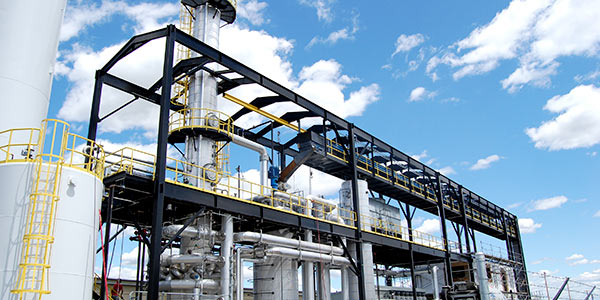Engineering Post Report
Energy is an integral component of the national economy and as such quite obviously is considered necessary for nearly all human activities. In the recent decades there has been a rapid increase in the global demand that was primarily derived from the expansion of economic activities, population growth, and rapid technological change . However, energy bottlenecks have also become a5 chronic problem for any country’s economy.
Pakistan has also suffered from such a situation in the past. Therefore, several large-scale projects were initiated between 2013 and 2018 to eliminate the electricity demand-supply gap and address the challenge of ensuring the smooth delivery of energy services to the people throughout the country without disruption. To this end, the federal government played an important and quite significant role in abridging severe energy demand imbalance by importing Liquefied Natural Gas (LNG).
The federal government envisions focusing on indigenous energy resources primarily hydel, solar, wind and Thar coal. In this regard it is paramount to note that the share of alternative and renewable energy sources (AREs) has also increased from zero percent in FY2014 to 6.8 percent of the electricity’s installed capacity in the last financial year due to the policies formulated in the right direction ensuring their implementation properly also. However, there was still potential for AREs to contribute more to the national energy supply and ensure affordable and universal access to electricity. The federal government was also committed to protecting the national interests by producing low-cost indigenous power.
The federal government also has already approved the Framework Guidelines for Fast track solar Initiatives 2022 for promoting and developing cost-effective local renewable energy sources and reducing the impact of high prices of imported fossil fuels in the global markets, resulting in high electricity tariffs and drainage of foreign precious foreign exchange. The framework as such covers Solar PV Energy Substitution for Expensive imported Fossil Fuels, Solar PV Generation on 11 KV Feeders, and Public Buildings Solarization.
According to the information available from the official sources, the federal government aims to achieve a 60 percent share of electricity ‘s generation capacity through indigenous clean energy technologies (ARE and hydro) by 2030, based on the Indicative Generation Capacity Expansion Plan (IGCEP). The plan, prepared by the National Transmission and Dispatch Company (NTDC) and being processed, considered for approval by the competent official bodies, has projected the country’s demand at 41338 MW and an installed capacity of 69372 MW by 2031 as the base case.
Nuclear power plants (NPPs) are also a reliable source of electricity as they run up for 18 months without refueling and store enough fuel for another 18 months on site. It makes them immune to short-term change in fuel prices or availability allowing them to achieve very high-capacity factors. The nuclear fleet comprising six NPPs with a total capacity of 3530 MW had contributed about 27 per cent of the total electricity generation in the national grid in December 2022.
It may also be mentioned here that in 2016, the federal government had imposed a moratorium on new imported fuel-based power projects. Moreover, the federal government has also planned to convert all commissioned imported coal independent power producers (IPPs) to Thar coal. Thar has the country’s largest coal reserves which have been developed over several years now. With the addition of three power projects during the last financial year, the total installed capacity from five Thar coal-based power generation has reached 3300 MW.
In Pakistan, the main consumers of petroleum products are the transport and power sectors, which account for 78.5 per cent and 10.8 percent of the total consumption , respectively. However, during the last financial year , the demand for Motor Spirit and High Speed Diesel had decreased mainly due to the high prices of these [products, while the demand for Furnace Oil had declined due to the shift of power generation to Re-gasified Liquefied Natural Gas (RLNG) or coal and other alternative sources. Thus, the total demand for petroleum products (16.72 million tonnes in July March FY2022) had reduced by 21.9 percent during July-March FY2023.On the other hand, the natural gas consumption amounted to around 3258 MMCFD from July-march FY2022 which included 631 MMCFD of RLNG volume. .
And, Pakistan’s energy sector was all set to witness a positive and most welcome transformation phase following the signing of a much-awaited Memorandum of Understanding (MoU) recently for execution of a $ 10 billion green refinery project at the strategic Gwadar Port. The project is a joint venture between four Pakistani state-owned oil and gas companies including Oil and Gas Development Company Limited (OGDCL), Pakistan State Oil (PSO), Pakistan Petroleum Limited (PPL) and Government Holdings ( Private) Limited (GHPL) and Saudi Arabian oil firm ARAMCO and aimed at establishing an integrated refinery petrochemical complex with a substantial crude oil processing capacity of at least 300000 barrels per day.
According to the experts in the oil sector, this somewhat ambitious initiative holds immense importance and promises for the country, especially the energy sector security. The establishment of a state-of-the-art refinery will hopefully considerably reduce the country’s reliance on costly imported refined petroleum products. With this refinery establishment in due course of time, the country will be able to produce a substantial portion of petroleum needs domestically ensuring a stable and secure supply of fuels. Resultantly, this will also help in saving billions of dollars on imports bills, leading to a positive impact on the balance of payments. The project also demonstrates Pakistan’s commitment to environmental conservation and the green refinery project will also solidify Pakistan’s position as a significant player in the regional energy market, facilitating energy trade and cooperation with neighboring countries, the experts added.






